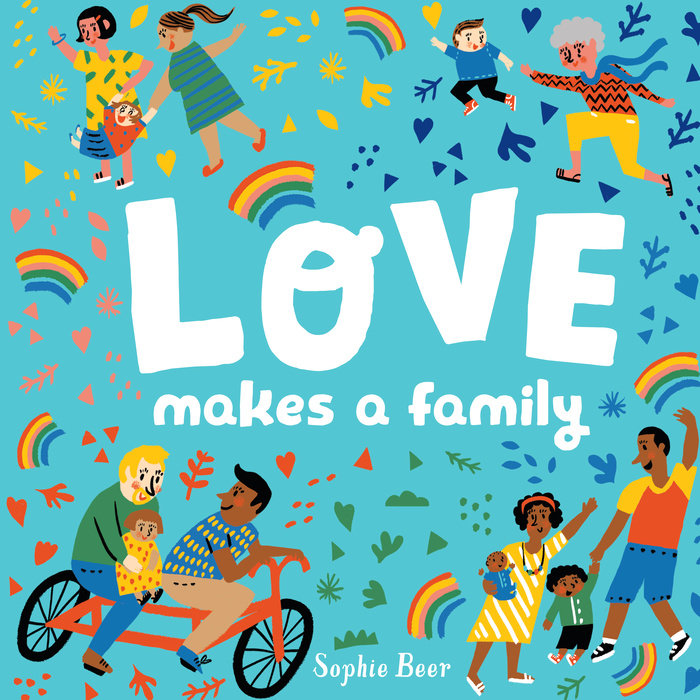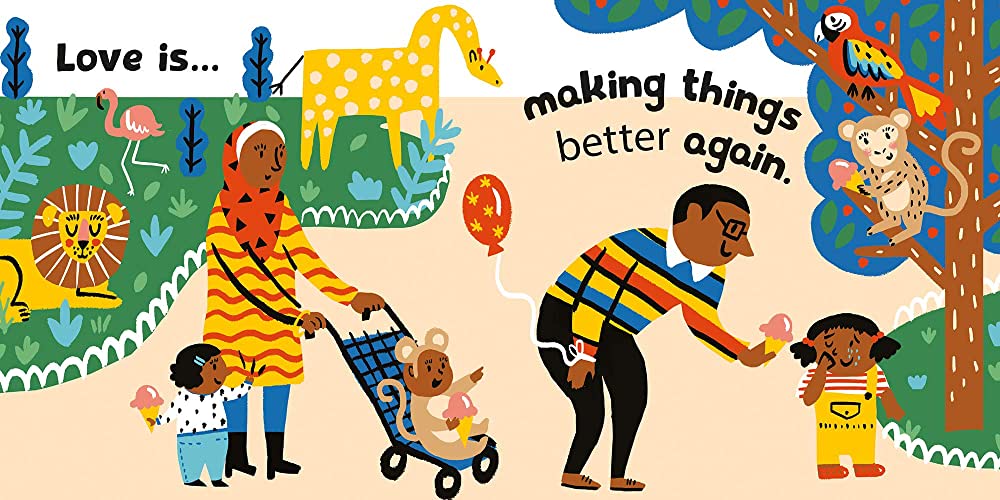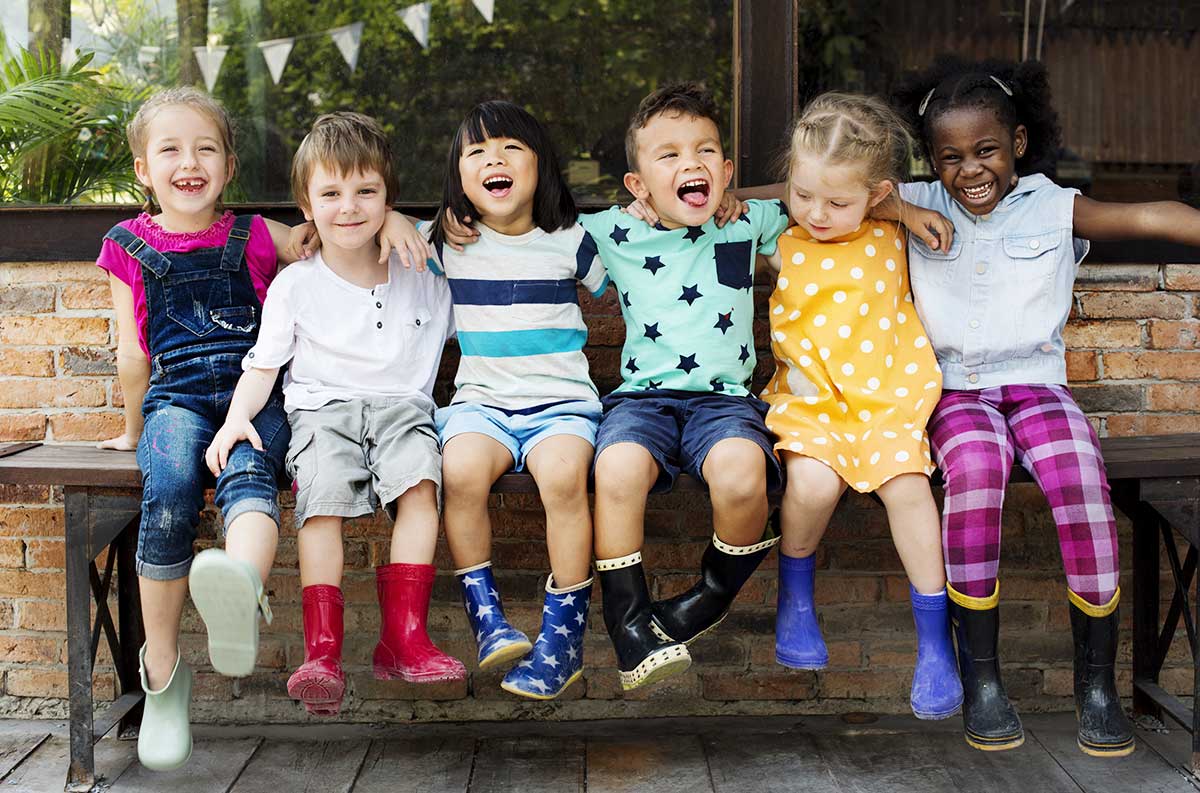
Inclusive Children's Book Teaching Guide
Love Makes a Family
What is this book about?
This fun, inclusive board book celebrates the one thing that makes every family a family: LOVE.
Love is baking a special cake. Love is lending a helping hand. Love is reading one more book.
In Love Makes a Family, different families are shown engaging in happy activities, from an early-morning wake-up to a kiss before bed.
Whether a child has two moms, two dads, one parent, or one of each, this simple preschool read-aloud demonstrates the most important part of each family’s life: the love that family members share.
Who is depicted in this book?
- LGBTQ+ led families
- Adults who transcend gender stereotypes
What early childhood themes and concepts does this book explore?
- Families come in different forms (including two moms or dads)
- How grownups express love to their children (taking care of them, helping when they are hurt)
- Typical play activities and daily routines (waking up, meals, pretend play, bath time)
How does this book support anti-bias education?
Love Makes a Family features representation of LGBTQ+ families, which teachers can use to help children develop an awareness of different kinds of families and how all families love and care for their children. Teachers can also use this book to help foster a sense of individual and family pride by encouraging children to celebrate their own identities and share information about their families and family activities.
Depending on how Love Makes a Family is shared or used—and the developmental level of the children—the images and text may be used to support the following core goals from the book, Anti-Bias Education for Young Children and Ourselves:
Identity—Teachers will nurture each child’s construction of knowledgeable and confident personal and social identities so that children will demonstrate self-awareness, confidence, family pride, and positive social identities.
Diversity—Teachers will promote each child’s comfortable, empathetic interactions with people from diverse backgrounds so that children will express comfort and joy with human diversity, use accurate language for human differences, and form deep, caring connections across all dimensions of human diversity.
How can this book be used to meet early childhood learning standards?
For all ages
Use Love Makes a Family to meet early childhood literacy standards
For children from birth to age three
Teaching suggestion: Point out familiar people and relationships depicted in the book and introduce the names that children use for the grownups in their lives.
What Illinois Early Learning Guideline does this meet for children from birth to age three?
Developmental DomainLanguage Development, Communication and Literacy
Standard: Receptive CommunicationChildren demonstrate the ability to comprehend both verbal and nonverbal communication.
Indicators for children:
- Recognizes and demonstrates understanding of familiar pictures, people and objects, such as saying “mama” while pointing to mother (16–24 months)
- Responds verbally and/or nonverbally to comments or questions while engaged in conversations with both peers and adults (21–36 months)
Teaching suggestion: Point out and model ways that grownups show love to children, such as helping, sharing meals and treats, playing, and reading together.
What Illinois Early Learning Guideline does this meet for children from birth to age three?
Developmental DomainSelf-Regulation
Standard: Emotional RegulationChildren demonstrate the emerging ability to identify and manage the expression of emotion in accordance with social and cultural contexts.
Indicators for children:
- Seeks out caregiver through physical actions (7–18 months)
- Seeks caregiver support when feeling overwhelmed by emotions (21–36 months)
For preschoolers (ages three to five)
Teaching suggestion: Invite the children to talk about family structures. Ask: "Who is in your family? What is the same and different among families?" Encourage them to discuss and draw/write about their own families, including the people that they consider to be family members and the activities that they engage in with their families.
What Illinois Early Learning and Development Standards does this meet for preschoolers?
Social Studies Standard18BDevelop an awareness of self within the context of family.
Benchmark 18.B.ECa:
Understand that each of us belongs to a family and recognize that families vary.
Teaching suggestion: Each page includes a simple sentence about the nature of love. Encourage the children to share how grownups love and care for them. Ask: "How do they play together? How do grownups make things better? What in their lives is similar to and different from the illustrations?"
What Illinois Early Learning and Development Standards does this meet for preschoolers?
Social Studies Standard18BDevelop an awareness of self within the context of family.
Benchmark 18.B.ECa:
Understand that each of us belongs to a family and recognize that families vary.
See inside this book.

